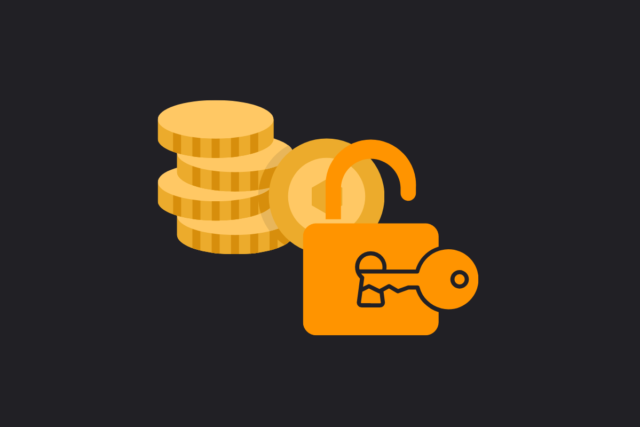- Sterling rises as UK GDP growth for the second quarter was in line with estimates.
- The slowdown in UK services inflation has come as a big relief to BoE policymakers.
- A moderate rise in US inflation has set the stage for a Fed rate cut in September.
The British Pound (GBP) is performing strongly against its major peers, except the Australian Dollar (AUD), in Thursday’s London session. The British currency is gaining further ground as the UK’s Office for National Statistics (ONS) has reported that the economy expanded in line with expectations in the second quarter of this year.
The preliminary Gross Domestic Product (GDP) report showed that the UK economy grew by 0.6% and 0.9% on a quarterly and annual basis, respectively. The pace at which the economy grew in the second quarter was somewhat slower than the growth rate recorded in the January-March period, but still robust. The UK economy remained stable in June compared with the previous month, as expected.
A decent growth rate and easing price pressures are a big relief for Bank of England (BoE) policymakers, who were concerned that keeping interest rates higher for an extended period due to persistent inflation could increase the burden on households and the broader economy.
On Wednesday, the Consumer Price Index (CPI) report for July showed that the core CPI – which excludes volatile items such as food, energy, alcohol and tobacco – slowed at a faster-than-expected pace to 3.3% from estimates of 3.4% and the June figure of 3.5%. This fall in core inflation was driven by a sharp easing of price pressures in the services sector as wage growth slowed.
This drop in inflation has raised expectations of a sequential interest rate cut by the BoE in September. Markets priced in a 44% chance of a quarter-point rate cut by the BoE, up from 36% before the data was released, Reuters reported.
Aside from monthly and second quarter GDP, the ONS has also reported factory data for June. The report showed that monthly Industrial and Manufacturing Production grew at a robust pace of 1.1% and 0.8% respectively, while investors forecast only marginal growth. On an annual basis, Industrial and Manufacturing Production contracted at a slower pace of 1.4% and 1.5% respectively.
Daily Market Movers Roundup: Sterling Outperforms Major Peers
- The British Pound strengthens against the US Dollar (USD) during European trading hours on Thursday. The GBP/USD pair capitalizes on the US Dollar’s subdued performance as the Federal Reserve’s (Fed) September interest rate cuts take center stage after the US (US) CPI report for July showed that price pressures are on track to return to the desired 2% rate.
- The US Dollar Index (DXY), which tracks the value of the greenback against six major currencies, is retreating slightly after posting a fresh weekly low at 102.20. Wednesday’s CPI report showed inflation pressures rose moderately, as expected. This has increased confidence that the Fed will take a dovish decision and make its first interest rate cut in more than four years. However, traders remain divided on the size by which interest rates will be cut.
- Confidence that the Fed will cut interest rates in September was further bolstered by Atlanta Fed Bank President Raphael Bostic’s dovish interest rate guidance following the release of the inflation data. Bostic said in an interview with the Financial Times (FT) that he is comfortable with rate cuts in September. When asked about the size of the rate cut, Bostic said he is open to half a point if the labor market deteriorates further.
- In Thursday’s session, investors will focus on the monthly US retail sales data for July, due at 12:30 GMT. Economists have estimated that retail store sales rose 0.3% after remaining flat in June. Retail sales data, a key measure of consumer spending, will be closely watched by investors as it will provide fresh clues on the inflation outlook and the state of the US economy.
Technical Analysis: Sterling looks to revisit two-week high of 1.2870
The British Pound is up to regain a two-week high of 1.2870 against the US Dollar. The GBP/USD pair’s near-term appeal remains firm as it holds the 20-day exponential moving average (EMA), which is trading around 1.2800.
Previously, Cable showed a strong recovery from a six-week low of 1.2665 after a positive divergence formation on a daily time frame, in which the pair continues to make higher lows while the momentum oscillator makes lower lows. This usually results in a resumption of the uptrend, but needs to be confirmed with more indicators.
The 14-day Relative Strength Index (RSI) is rebounding after finding support near 40.00, showing signs of buying interest at lower levels.
On the upside, the round-level resistance of 1.2900 and the psychological figure of 1.3000 will act as important resistances for the British Pound. Alternatively, the recovery move could fail if the asset breaks below the August 8 low at 1.2665. This would expose the asset to the June 27 low at 1.2613, followed by the April 29 high at 1.2570.
The British Pound FAQs
The Pound Sterling (GBP) is the oldest currency in the world (886 AD) and the official currency of the United Kingdom. It is the fourth most traded currency unit in the world, accounting for 12% of all transactions and an average of $630 billion a day, as of 2022.
Its key currency pairs are GBP/USD, also known as the “Cable,” which accounts for 11% of the forex market, GBP/JPY, or the “Dragon” as it is known to traders (3%), and EUR/GBP (2%). The British Pound is issued by the Bank of England (BoE).
The most important factor influencing the value of the British Pound is the monetary policy decided by the Bank of England. The Bank of England bases its decisions on achieving its main objective of “price stability”, i.e. a stable inflation rate of around 2%. Its main tool for achieving this is the adjustment of interest rates.
When inflation is too high, the Bank of England tries to contain it by raising interest rates, making credit more expensive for individuals and businesses. This is generally positive for the GBP, as higher interest rates make the UK a more attractive place for global investors to park their money.
When inflation is too low, it is a sign that economic growth is slowing. In this scenario, the BoE will consider lowering interest rates to make credit cheaper, so that companies borrow more to invest in growth-generating projects.
The data released gauges the health of the economy and can influence the value of the Pound. Indicators such as GDP, manufacturing and services PMIs, and employment can influence the direction of the Pound.
A strong economy is good for the British Pound. Not only does it attract more foreign investment, but it may encourage the Bank of England to raise interest rates, which will directly strengthen the British Pound. Conversely, if economic data is weak, the British Pound is likely to fall.
Another significant indicator for the pound is the trade balance. This indicator measures the difference between what a country earns from its exports and what it spends on imports during a given period.
If a country produces highly sought-after exports, its currency will benefit exclusively from the additional demand created by foreign buyers who wish to purchase these goods. Therefore, a positive net trade balance strengthens a currency and vice versa for a negative balance.
Source: Fx Street
I am Joshua Winder, a senior-level journalist and editor at World Stock Market. I specialize in covering news related to the stock market and economic trends. With more than 8 years of experience in this field, I have become an expert in financial reporting.







